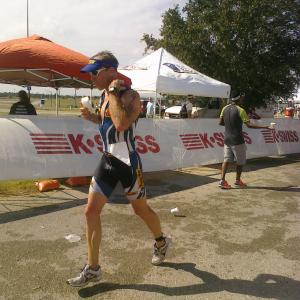Strength training builds on stability training
In my last article, I wrote about the importance of stability training in the progression of a training plan. Stability training allows individuals to better recruit specific muscles for more efficient movements by improving flexibility, neuromuscular control and strength. Focusing on single-joint movements also helps improve a dominant-side muscle discrepancy while also reducing the risk of injury once individuals get into a strength or power phase of training.
Strength training places a larger workload on the body than stability training, so it is important to have a two-month period of stability training under your belt before getting into strength training. In strength training, most exercises will involve multiple-joint movements; a strong core and strong hip stabilizers will be needed to maintain proper spine angle throughout specific movements to optimize performance and reduce the risk of injury.
For those of you who would like to try some strength-training movements, start with a squat press to single-leg movement. Do four sets of 12 repetitions.
While standing with both feet flat on the floor, drop into a squat while you hold 15 percent to 20 percent of your body weight in free weights at your sides. As you move up out of the squat, transfer your weight onto one foot while you also move the free weights onto your shoulders, standing on one foot.
After you gain balance on one foot, elevate the free weights over your head, known as a military press, and hold balance for a good second or two. You will repeat that movement 12 times, alternating the single leg you are balancing on after each repetition.
Things to remember during movement:
• Knee should stay behind your toe as you drop into squat
• Keep shoulders upright; don't lean forward. Keep good posture
• Free weights should be dropped alongside of body
• Squat as if you are sitting in a chair; try to drop about 90 degrees
• Weight distribution of the foot will be even, with a little more toward heel
• Try to engage glute and keep knee from sliding during movement
• As you transfer weight to single leg, try to stay as balanced as possible
• After movement, return to stand on both feet.
Many of these movements are total body movements. A proper warmup is needed to prepare your body for this type of workout. A 10-minute aerobic effort is adequate; a treadmill, rower, elliptical or stationary bike can be used to warm up. Failure to warm up and cool down properly increases the risk of injury.
No matter what type of training plan or exercise movement you decide to work on, make sure you have proper form. For beginners it is best to have a certified personal trainer walk you through a few workouts to make sure you are doing the exercises correctly. We all want to get stronger and be healthier, but using improper form could cause more issues and prevent you from reaching your goals.













































